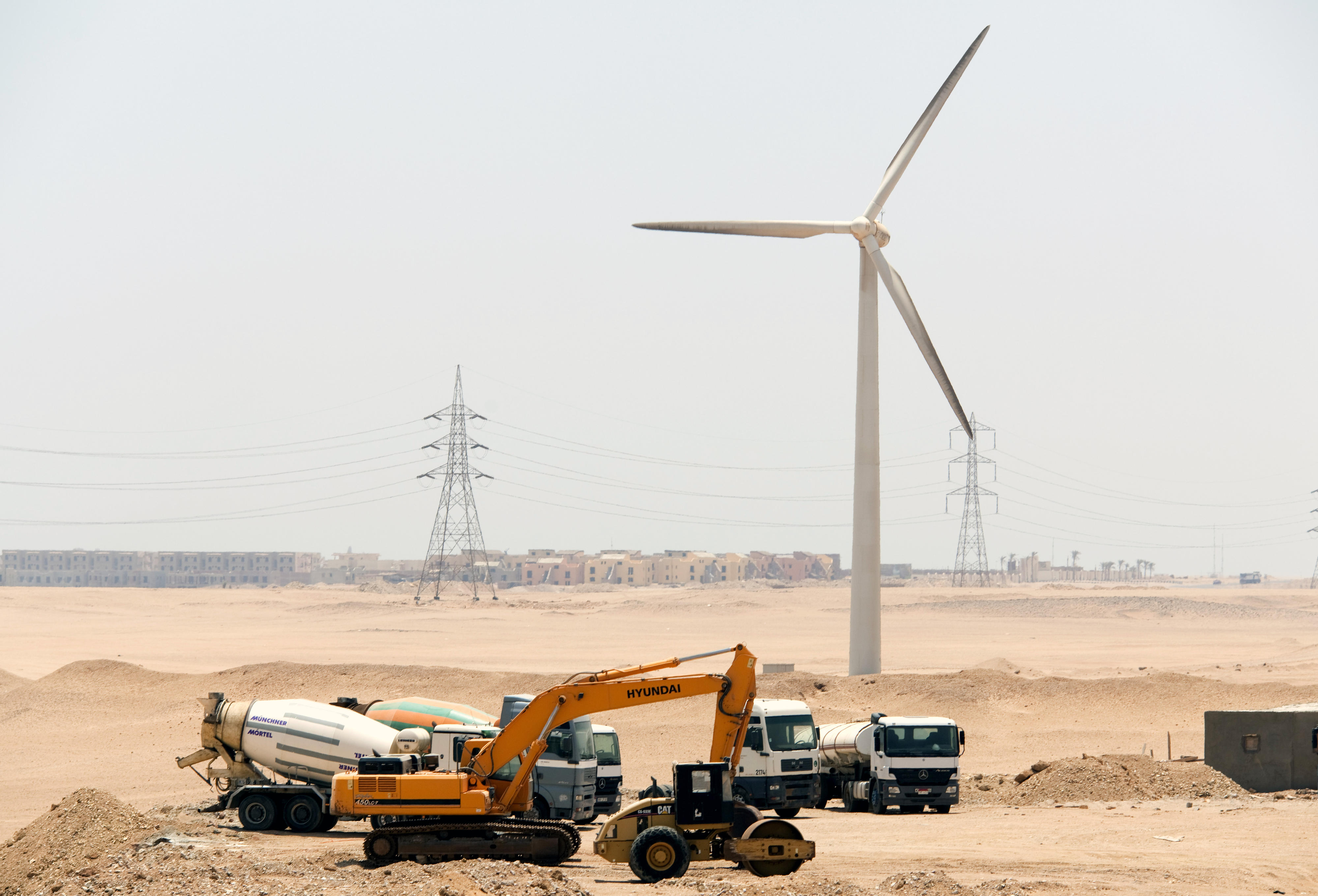Economic situation Ambitious government agenda, but need for reform remains huge
Construction site vehicles in front of a wind turbine in Egypt
With its Vision 2030 (External link), the current government launched an ambitious programme in 2016 for the sustainable development of the country and introduced state-led measures to modernise the economy. The government is thus dismantling subsidies that distort competition and is embarking on tax reforms. The government also has ambitions to overhaul the public budget and to improve the investment climate. The effect of a lot of the measures, however, is being hampered because agreed targets are not being implemented at all or not sufficiently. As a consequence, only limited progress has been achieved. In addition, the Egyptian government is primarily pursuing large-scale infrastructure projects with high visibility and involving high levels of debt. However, further measures to stimulate the private sector are necessary in order to create sufficient jobs and decent incomes for all population groups in the long term.
Lack of prospects for young people
Creating good job opportunities, especially for young people, continues to be a huge challenge for the country. In recent years, official unemployment rates have fallen to approximately 6.4 per cent in late 2024 (13 per cent in 2014). Yet, young people aged between 15 and 29 years account for almost two thirds of the unemployed. What is more, the employment rate – that is, the percentage of working people with social protection – is only around 40 per cent. Since an estimated 60 per cent of the economic activities in the country takes place in the informal sector, it is likely that the informal unemployment rate is much higher and that there are high levels of underemployment.
As at: 18/07/2025
